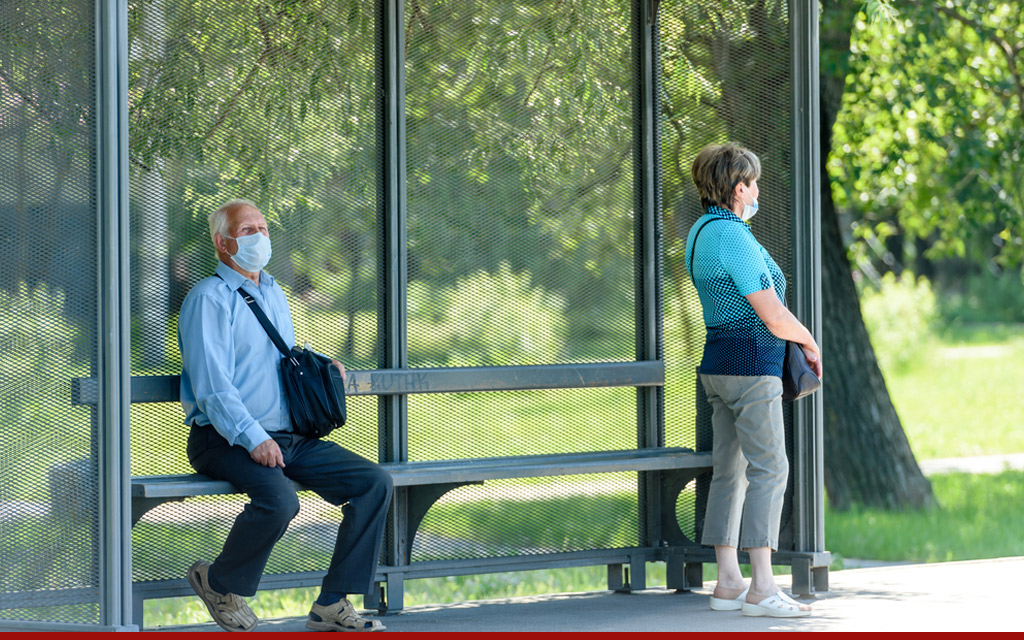We’ve never had more ways to connect and communicate. We’ve never had better tech capabilities. Our smartphones are smarter than the smartest mainframes of yesteryear. So why can’t we use technology to help trace contacts and stop the spread of Covid-19?
Spoiler alert: You’ve got to figure human behavior into the equation. Americans are about as likely to report they’ve had Covid-19 and turn over their contacts as they are to report they’ve got head lice or STDs.
Contact tracing involves identifying a patient with Covid-19. Then you work backward to alert all people you can identify who the patient has come in contact with. Simple enough. You can do this with people who conduct interviews and pursue the contacts. You can also enlist technology. The technologies are in your smartphone–either location-based (GPS) tracing or proximity-based tracing. (That means Bluetooth that identifies phones that are in close proximity).
Other countries have had some success using contact tracing as part of their cocktail of responses to stave off the virus. In Iceland, a country of 400,000, the government used an app to help infected people “remember” where they’d been and who they’d been in contact with. It used their mobile phones’ location data. The app saw a 40% adoption rate by Icelanders.
Singapore rolled out its contact tracing app in early May. TraceTogether relies on Bluetooth signals pinged between phones. When the apps had problems, the government introduced wearable Bluetooth tokens that relied solely on proximity data.
New Zealand’s app tracked contacts simply by having mobile app users scan QR codes placed at their destinations. They used the collected information to notify anyone who had been in that same place, thus in contact with an infected person.
Those were the voluntary efforts. Most aggressive? China and South Korea. Each required patients to turn over information about where they’d been for the last 14 days by just taking GPS or other location information from their phones or from spending records.
Fugghedaboutit, America. Not going to happen. “I have to tell you, it’s not going well,” Dr. Anthony Fauci said in an interview with CNBC’s Meg Tirrell on June 26, suggesting that 50-70% of Americans contacted by phone won’t even talk to the tracer. And that’s human tracers.
Technology solutions that you’d think could be implemented quickly with US ingenuity are off to a slow start. Tech efforts have either been left to the individual states (which are generally desperately low on funds) or private tech firms. North Dakota is a good example of how that is going. It had an app built for $9,000, a tool called Care19, that tracks a patients’ geographic history. It grew out of an app the creator initially designed to keep football fans in touch. At first, the app had problems because both iOS and Android devices generally disabled Bluetooth when the screen was dark, but this was remedied. Bluetooth may present less of a privacy problem, but GPS is ultimately the tool that North Dakota used. While the app may be laudable, needless to say a centralized, not state-by-state, approach would be more useful.
Google and Apple are the highest-profile companies working on contact tracing apps. They announced they’d be working together to make changes to underlying platforms of both iOS and Android to enable contact tracing. Now,, with changes implemented, it’s up to app makers to use the new features. Not a lot of disease-fighting impact from this thus far. Separately, Salesforce worked with NYC to establish a contact tracing call center but the snafu, again, was that no one was willing to talk.
So it’s not a tech problem. It’s a human problem, and a very U.S. one. In countries where citizens trust their government and believe it’s doing things in their best interest, people comply. At this juncture, it’s apparently not in our cultural DNA to opt-in so we can fight COVID as a team effort.
The only bright spots in contact tracing for the US are in small isolated bubbles. Some companies, for example, are taking this seriously and software companies have tools for them. MobilePrograming.com is releasing a contact tracing enterprise app as I type. Its app will provide a social distancing “ping” when another device running the app is closer than 6 feet away. It also has a self-reporting system to alert people who’ve been in contact with an employee who reports a fever or cough. Akash Verma, a project leader for Mobile Programming, says “Even in the enterprise it would be hard to make compliance mandatory, but if the mobile device belonged to the employer it would be easier.” Verma said his company is getting inquiries from sectors like hospitality and events.
Another way contact tracing is finding success relies on having information about the physical space. CarePredict deploys systems already used in nursing homes to track patients’ movement and activity. It involves a wearable (that provides proximity and location) used by both staff and patients, coupled with stationary beacons. When the pandemic struck, the company added a Covid-19 tracker because it already had data on who used the nursing home’s library, rec room, or dining room on a given day. When someone was diagnosed with Covid_19 the facility could scroll back through the log using a simple dashboard and pinpoint who was in contact with home and when.
Those knowledgeable about contact tracing say you don’t need to have 100% participation. Even if only 50% of symptomatic cases trace 40% of their contacts you can have a significant impact on spread of the disease. But it seems as if you need to be living in a bubble, in an authoritarian country, or you have to really love your government to take advantage of this critical tool to combat pandemics.
Read More: https://techonomy.com/2020/07/why-americans-hate-contact-tracing/




